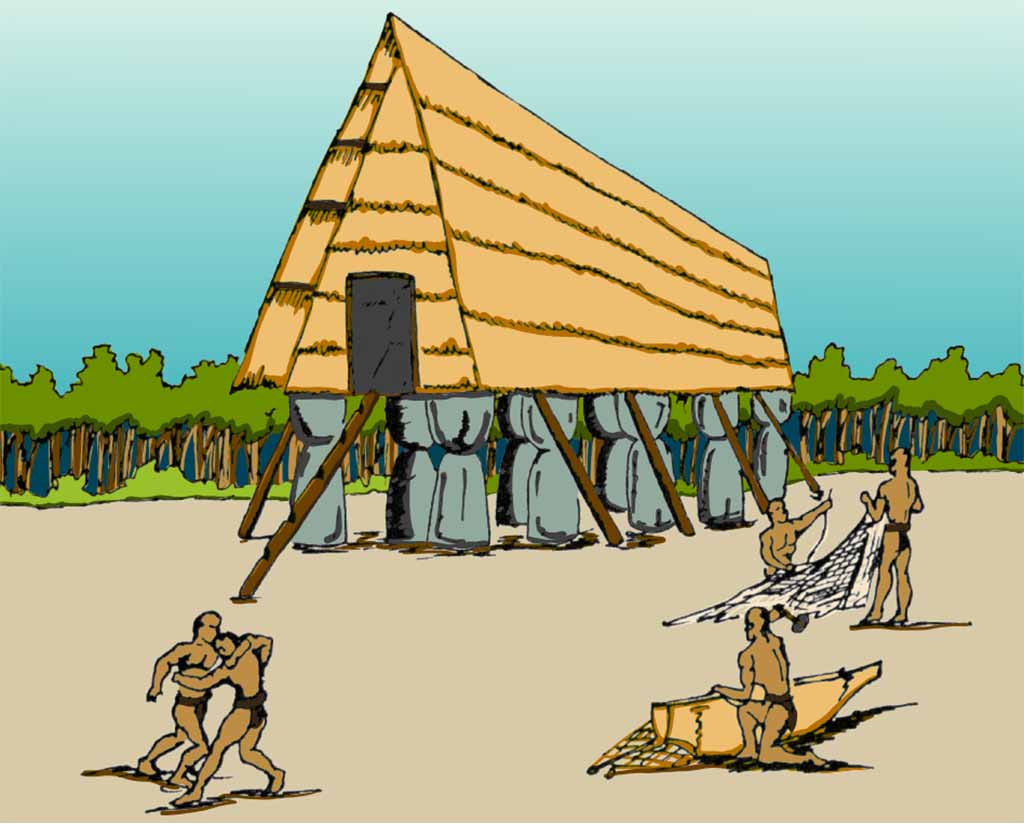Uritao: Bachelor

Young bachelors
When Chamorro/CHamoru males reached puberty during ancient times, they were sent to live at the Guma’ Uritao, a house for bachelors. The bachelors would live at the Guma’ Uritao of their mother’s family. There were one or two Guma’ Uritao in every village.
There the young men would learn skills such as fishing, canoe making, navigation, tool construction and gain other knowledge necessary for his transition into manhood, and at the same time develop close ties with his cousins, uncles and nephews.
These young men were known as Uritao (also Ulitao), the young bachelors. A Uritao was distinguished from other males by the sticks they carried called tunas which were four or five feet long and had an eighteen inch tassel of pokse (a type of fiberous hybiscus) attached to the end. The bachelors also used a special language, fino gualafon, which was only understood by the youth.
The Uritao were much discussed in the Spanish Missionary early accounts because the missionaries disapproved of the bachelors’ having sex freely outside of marriage. Young unmarried women, called Ma’ Uritao, lived in the Guma’ Uritao to provide sexual experience for the young men. The Uritao presented the fathers of young women with gifts, usually hoops of iron, to compensate the family for the loss of a daughter’s labor for the time she was away from her family. The missionaries, however, viewed this as prostitution.
By Brian Muna
For further reading
Cunningham, Lawrence J. Ancient Chamorro Society. Honolulu: Bess Press, 1992.
García, Francisco. The Life and Martyrdom of Diego Luis de San Vitores, S.J. Translated by Margaret M. Higgins, Felicia Plaza, and Juan MH Ledesma. Edited by James A. McDonough. MARC Monograph Series 3. Mangilao: Micronesian Area Research Center, University of Guam, 2004.
Herman, RDK. “Guam: Inarajan – Native Place: Village.” Pacific Worlds, 2003.
Hestorian Taotao Tano’: History of the Chamorro People. The Hale’-ta Series. Hagåtña: Political Status Education Coordinating Commission, 1993.
Iyechad, Lilli Perez. An Historical Perspective of Helping Practices Associated with Birth, Marriage and Death Among Chamorros in Guam. Lewiston: Edwin Mellen Press, 2001.
Rogers, Robert. Destiny’s Landfall: A History of Guam. Honolulu: University of Hawai’i Press, 1995.
Russell, Scott. Tiempon I Manmofo’na: Ancient Chamorro Culture and History of the Northern Mariana Islands. Saipan: Commonwealth of the Northern Mariana Islands Division of Historic Preservation, 1998.